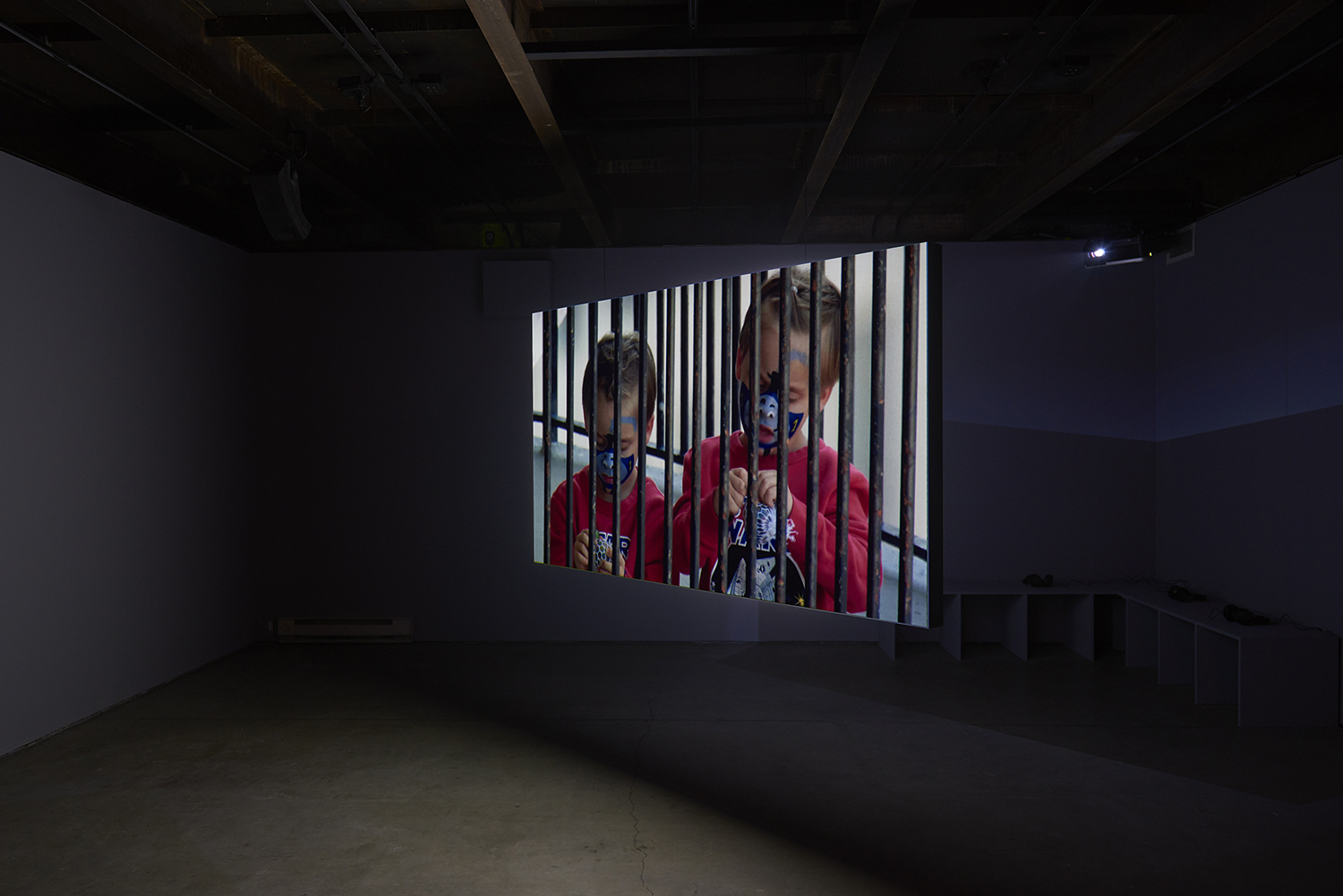
Z = |Z/Z•Z-1 mod 2|-1
Press: Flash Art (2), Contemporary Art Daily (2), Artribune, MUBI Notebook, ArtReview (2), Sculpture Center (2), Arts of the Working Class
Z = |Z/Z•Z-1 mod 2|-1: Lavender Town Syndrome
13m 43s ● HD video ● Colour ● Sound ● 2020
A camera lens with a range of 75mm to 1500mm, propelled by an amphetamine-fueled stream of consciousness rant, repeatedly zooms into the balcony of an apartment inhabited by the narrator, their two artistic collaborators, and their twin boys in Chicago’s iconic Marina Towers. After zeroing in on a series of meme-influenced tableau, the zoom idles on a recreation of a Papier-mâché Pikachu that went viral after being posted to Reddit in 2013. From here the narrator recounts a theoretical argument with their cohabitants about what kind of environment is simulated for Pokémon when they’re transformed into light and stored inside a Poké Ball between battles.
Z = |Z/Z•Z-1 mod 2|-1: The Old Victrola
13m 43s ● HD video ● Colour ● Sound ● 2020
This work uses three different imaging technologies—a photographic lens, photorealistic ray tracing animations, and fractal ray-marching animations—to zoom through three constructed environments.
The first section employs a 75mm to 1500mm Canon telephoto lens developed for wildlife cinematography. This uncannily prolonged zoom moves from a cityscape view to details on a single balcony of Bertrand Goldberg’s Marina City, a lotus-shaped oddity of “organic architecture” amidst Chicago’s thoroughly rectangular built environment that has been featured in movies such as I, Robot, Source Code, The Dark Knight, and Transformers 3.
The second section employs 8K photorealistic computer generated materials commonly used in architectural renders, video games, and the motion picture industry. These “physically based rendering” (PBR) materials are sold through the online database Substance Source, in which the surfaces of metals, plastics, rocks, and more are previewed as spherical forms.
The third section was procedurally generated using fractal software developed by the computer engineer Code Parade. Fractal algorithms are also commonly used in the fields of architecture, video games, and motion pictures, from computer-generated fractal surfaces in architectural renders to visual effects in science fiction films such as Inception, Doctor Strange, and Annihilation. I worked with Code Parade to customize his program towards heightened cinematic realism and render what look like infinite synthetic 3d landscapes constructed for something other than the human body.

Z = |Z/Z•Z-1 mod 2|-1: Slideshow
13m 43s ● HD video ● Colour ● Sound ● 2020
Screenings
International Film Festival Rotterdam - Rotterdam, The Netherlands
Invisible Adversaries, Amos Rex - Helsinki, Finland
London Short Film Festival - London, England
34th Filmwinter Stuttgart - Stuttgart, Germany
Open Cinema, Spazio Volta - Bergamo, Italy
Beijing International Short Film Festival - Beijing, China
Renaissance TV, Renaissance Society - Chicago, Illinois
European Media Art Festival No. 34 - Osnabrück, Germany
Exhibitions
Lavender Town Syndrome, Ordet - Milan, Italy
In Practice: Total Disbelief, Sculpture Center - New York, New York
On Survival, Galerie Britta Rettberg - Munich, Germany
Anthropocene on Hold, Polyeco Contemporary Art Initiative - Piraeus, Greece
Bar, Commercial Street - Los Angeles, California

Lavender Town Syndrome, Ordet - Milan, Italy

In Practice: Total Disbelief, Sculpture Center - New York, New York